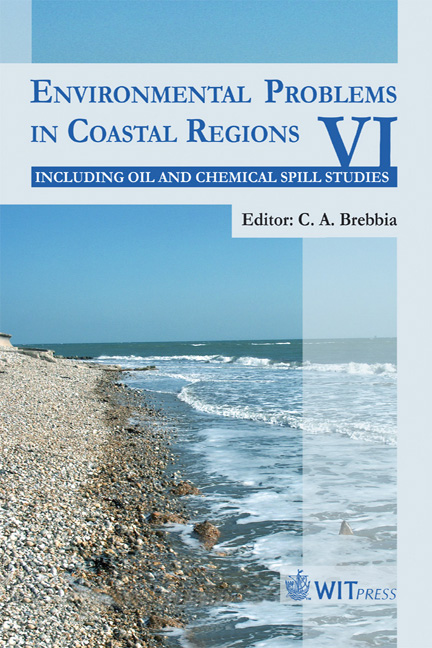Ship-wave Induced Sediment Transport In Tidal Creeks
Price
Free (open access)
Transaction
Volume
88
Pages
8
Published
2006
Size
1,339 kb
Paper DOI
10.2495/CENV060121
Copyright
WIT Press
Author(s)
T. M. Ravens & R. Thomas
Abstract
During the summer of 2005, a tidal creek (\“Pine Gully”) within a few km of the Houston Ship Channel (USA) was totally plugged up with a 200-m long and 1.5-m deep plug of silt and fine sand. The volume of the plug was about 1,800 cubic meters. The seaward end of the plug was about 200 m landward of the creek’s inlet. Between November 2005 and January 2006, several hours of measurements of velocity, pressure, and suspended sediment concentration were taken in the creek about half way between the plug and the inlet. Field observations and analysis of these data indicated ship-wave-induced surges of water. These surges caused a net transport of about 0.44 cubic meters per ship of suspended silt and fine sand toward the plug. This transport rate was sufficient to explain the observed rate of accumulation of sediment in the plug over a 5- month period. Cores of the plug indicated that the plug material (fine sand and silt) was consistent throughout, suggesting a single pathway (from the bay). During the period of plug formation, rainfall and creek discharge were relatively low indicating a likely factor for the plugging. Keywords: tidal creek siltation, ship-wave induced bores. 1 Introduction Between May and August of 2005, a plug of fine sand and silt formed in Pine Gully, a 3 km-long tidal creek by Houston Ship Channel in northwest Galveston Bay (Figure 1). The plug completely blocked the flow of water from the watershed, raising concerns about possible flooding. The seaward end of the plug is about 300 m from the Pine Gully inlet (Figure 2) and the plug extends about 200 m. The plug also filled about 100 m of a tributary to the Pine Gully
Keywords
tidal creek siltation, ship-wave induced bores.





